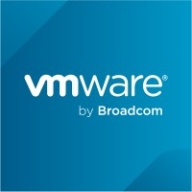![AWS Cost Management [EOL] Logo](https://images.peerspot.com/image/upload/c_scale,dpr_3.0,f_auto,q_100,w_64/ecwtjjlwilx2g4qujp0d5nz7cwsn.jpg?_a=BACAGSDL)

Find out what your peers are saying about IBM, Nutanix, Microsoft and others in Cloud Cost Management.


| Company Size | Count |
|---|---|
| Small Business | 3 |
| Midsize Enterprise | 5 |
| Large Enterprise | 4 |
| Company Size | Count |
|---|---|
| Small Business | 4 |
| Midsize Enterprise | 2 |
| Large Enterprise | 4 |
AWS Cost Management tools give you visibility into your AWS costs and usage. There are a range of AWS Cost Management tools to help you access, organize, understand, control, and optimize your costs.
VMware Tanzu CloudHealth, formerly known as VMware Aria Cost Powered by CloudHealth, is a specialized cloud management platform tailored for Multi-Cloud Cost Optimization. It offers comprehensive visibility into cloud spending across various providers, enabling users to identify areas for optimization and make informed resource allocation decisions. With features like reserved instance management, resource rightsizing, and automated cost governance policies, it facilitates financial management for optimal cost efficiency. Beyond cost optimization, Tanzu CloudHealth enhances cloud operations through workload optimization and governance automation, catering to multi-cloud environments encompassing public, private, and hybrid clouds. Its primary focus remains on enabling organizations to effectively manage and reduce cloud expenditures while supporting operations across diverse cloud platforms.
We monitor all Cloud Cost Management reviews to prevent fraudulent reviews and keep review quality high. We do not post reviews by company employees or direct competitors. We validate each review for authenticity via cross-reference with LinkedIn, and personal follow-up with the reviewer when necessary.